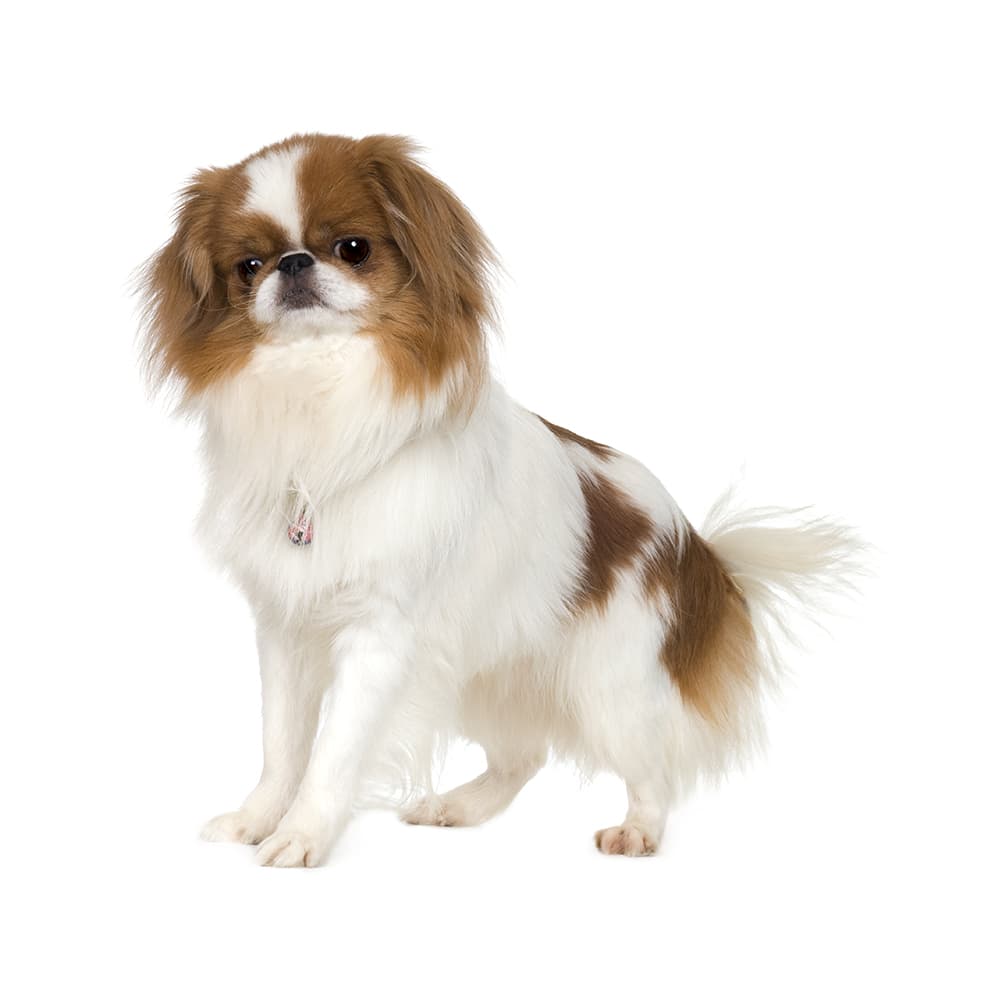Discover your dog's connection to this breed and 200+ others



Discover your dog's connection to this breed and 200+ others


The Japanese Chin, also known as the Japanese Spaniel, is an ancient toy breed originating from China. They were highly revered in Japan, where they were kept as cherished companions by aristocrats and royalty. The breed was introduced to Japan in the 7th century, and from there, they made their way to Europe in the 17th century, becoming popular among European nobility as well. The breed's presence in Europe also influenced the Chin name, as it was a misinterpretation of the word Chinese.
The Japanese Chin may suffer from atlantoaxial instability, cataracts, corneal abrasions, distichiasis, entropion, early-onset heart murmurs, GM-2 gangliosidosis, GM-2 gangliosidosis type I, hypothyroidism, Legg–Calvé–Perthes disease, lens luxation, mitral valve disease, patellar luxation, persistent hyaloid artery, persistent hyperplastic tunica vasculosa lentis, persistent pupillary membranes, progressive retinal atrophy (prcd), ulcerative keratitis, and vitreous degeneration. Patella and ophthalmologist evaluations are recommended for this breed along with GM2 mutation DNA tests and cardiac exams. The Japanese Chin is a brachycephalic breed, which makes them intolerant to heat. They also cannot tolerate anesthesia.
Japanese Chins are known for their charming and affectionate nature. They form strong bonds with their human families and enjoy being lap dogs, often seeking attention and companionship. Despite their small size, they can be quite confident and lively. However, they may be reserved around strangers. They are generally well-mannered and gentle, making them excellent companions for families and seniors alike.
A canine genetic lineage is a group of individuals or entire breeds that descended from common ancestors predating modern breed formation. Often these lineages are associated with a ‘type’ of dog with a unique historical working role and associated behaviors (e.g., herding, scent hunting, etc.).
Breeds within the toy dog lineage were developed to be companion animals. They originated as lap dogs for royalty, nobility, and affluent individuals, and typically weigh less than 15 pounds. Breeds within the toy dog lineage were bred to be friendly and sociable, playful, and energetic while also having a heightened awareness of their environment.
Example breeds with ancestry from this lineage include Chihuahua, Maltese, and Shih Tzu.
The Japanese Chin is often depicted in traditional Japanese art, including paintings and porcelain figurines.
Despite the name "Japanese Chin," the breed actually has Chinese origins.
They have a distinct "cat-like" behavior, such as grooming themselves and using their paws to touch objects.
In the past, they were considered sacred dogs in Japan, and some even had their own servants.
The Japanese Chin has a luxurious, long, and silky coat that features a profuse mane of fur around their neck and chest. Their coat is straight and feathered, especially on their ears, legs, and tail.
Doi:10.1002/9781119540687
https://www.akc.org/dog-breeds/japanese-chin/ https://www.petmd.com/dog/breeds/c_dg_japanese_chin https://www.fci.be/en/nomenclature/JAPANESE-CHIN-206.html
https://www.ukcdogs.com/japanese-chin
Recommended by top vets with decades of experience
21 breeds
64 genetic health markers
50 genetic trait markers
